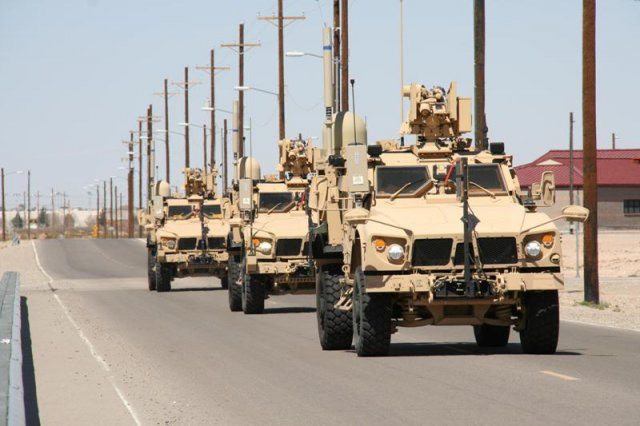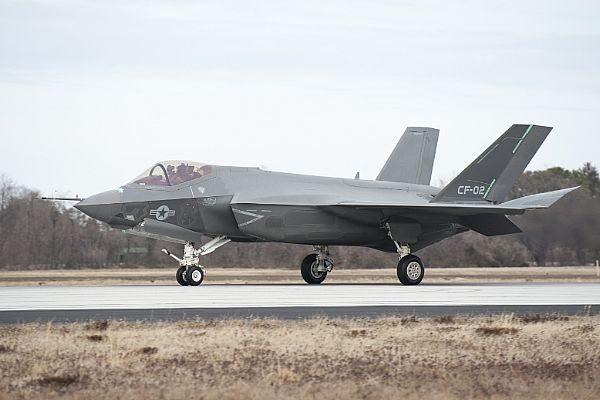While thousands of Soldiers maneuver across the New Mexico desert to assess the Army’s future tactical communications network, a smaller group more than a thousand miles away is playing a quieter but essential role in the Network Integration Evaluation 12.2.
For the first time, Army planners have incorporated the role of higher headquarters into the Network Integration Evaluation, known the NIE, with the 101st Airborne Division (Air Assault) acting as the higher headquarters for the 2nd Brigade, 1st Armored Division. Just as it would in combat operations, the division is commanding and coordinating across subordinate elements, which include 2/1 AD at White Sands Missile Range, N.M., the 1st Sustainment Brigade at Fort Riley, Kan., and a “simulation brigade” that is notionally fighting alongside 2/1 AD to provide added realism and network traffic.
Under the rigorous operational scenario designed for NIE 12.2, the 101st has been assigned to help support and stabilize the Army and government of the fictional country of Attica, which is fighting off an incursion by the army of a neighboring country and an insurgency. The 101st has sent 2/1 AD and the simulation brigade into the thick of battle, where they are using new network technologies to communicate across echelons and while on the move.
“It puts the brigade combat team in a more realistic environment where they’re talking directly to a division headquarters, they’re sharing information with that division headquarters, and they get different insights that only a division headquarters can provide,” said Brig. Gen. Randal Dragon, commander of the Brigade Modernization Command, or BMC, part of the Triad of organizations that execute the NIEs. “Any time you can train and evaluate in a multi-echelon approach, you start to see things that you simply didn’t see before.”
NIE 12.2 is the third in a series of semi-annual field exercises designed to further integrate and rapidly mature the tactical network, the Army’s top modernization priority. It is the first NIE to involve a higher headquarters and extend its test footprint beyond White Sands and Fort Bliss, Texas.
The involvement of the 101st Airborne allows the Army to evaluate network capability the way it would be used in theater — across distances and echelons. It will also help the Army establish the techniques and procedures for how these new capabilities will enhance battlefield communications at echelons from division down to the tactical edge.
“We want to properly test this system before we deliver it to our Soldiers,” said Maj. Gen. James McConville, commanding general of the 101st Airborne. “Our responsibility is to make sure we properly equip and train our Soldiers, and in order to do that we need to make sure this system can support our information requirements.”
NIE 12.2 also includes the formal operational test for the Army’s on-the-move communications backbone, known as Warfighter Information Network-Tactical, or WIN-T, Increment 2, which enhances network connectivity by introducing on-the-move satellite communications down to the company level. Data and Soldier feedback from the 101st Airborne will factor into the test results for WIN-T Increment 2.
“The 101st is here to give a fair test to this system to make sure that it works moving forward for the Division and the rest of the Army,” said Maj. Erik Koenig, deputy communications officer for the 101st Airborne. “We know where we need to be and what threads need to be done — it’s just actually now executing that, showing the data pushing and pulling and making sure we do an operational stress test.”
In practical terms, that means division personnel will be able to constantly follow the activities and movements of 2/1 AD via several mission command systems connected to the network. They will also communicate directly via voice and data with 2/1 AD commander Col. Dan Pinnell both from his tactical operations center and as he navigates across the battlefield in a vehicle equipped with WIN-T Increment 2.
“Static and moving, I should be able to talk to them out of my command post and (from) my vehicle,” Pinnell said. “At a minimum they’ll be tracking what we’re doing, at maximum there will be coordination with them like we would have to do in a real fight.”
At Fort Campbell, there are three locations where the IOT&E will be conducted: the Tactical Command Post, or TAC, the Joint Operations Center, or JOC, and the Network Operations Service Center, or NOSC. Staffing those locations and training personnel on WIN-T equipment has provided useful experience for the division as it prepares for other exercises and eventual deployment, said Lt. Col. Jason M. Jones, chief of exercises for the 101st Airborne.
“This really does give us a good chance to prepare, and technically it gives us a chance to see what’s coming up in the future,” Jones said. “It gives our leaders and our Soldiers a chance to see what the Army is planning to do, what capabilities are out there and what’s the next generation of this system.”
The physical distance between the NIE location at White Sands and Fort Campbell also contributes “friction” that adds to the realism of the test scenario, Jones said.
“It’s always been a challenge for the testing community — how do you put the system to work in a true field type test and conditions?” he said. “I wouldn’t promise that what we’ve got here is 100 percent, but it’s pretty close. We can verify that the equipment does what it’s supposed to do, and validate that OK, does it meet the users’ intent?”











